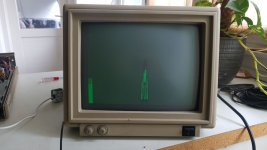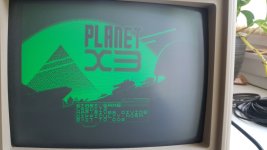digger
Experienced Member
Sticking more with the actual topic of this therad: what would also be an idea is to render such AGI games "zoomed", so without any loss of graphical detail, but with everything blown up 2x, with the monitor only showing part of the screen and using this hardware scrolling functionality to follow the playable character as the player moves them around the screen. It might pose challenges for parts of the game where a dangerous enemy appears that isn't immediately shown in the viewable part of the screen.




